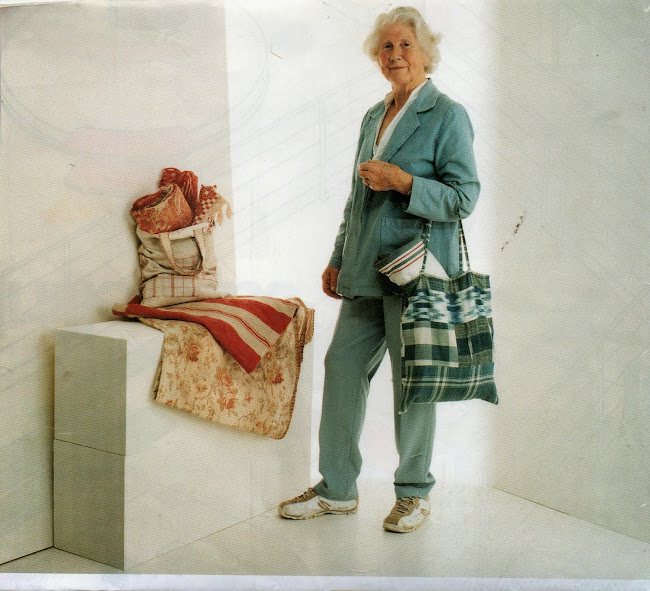 |
| A cow coat (made for oxen)woven in hemp, complete with tail piece and neck halter. |
Hi Donna, I loved hearing that you too have discovered cow coats in Southern France - they seem to have been mostly used near the Pyrenees in the very hot sticky weather when the oxen had to work in the fields and the horse flies drove them mad! I bought the first lot from a very Spanish lady who had a junky brocante at a farm and that was the first I knew about them and I have searched for more ever since as they seemed to me the epitome of rustic life - so useful, so suitable and quel chic! She told me they were no longer of any use and proudly pointed to the tractor in the yard and said the oxen had gone. When they were used for the Pacific 'Ocean Villa' of Andrew Lloyd Webber, they were ideal to take all the sun, rain and sea spray on the decks and they were converted into thick cushions for the wrought iron rocking chairs that adorned the terraces. Everything was 'bespoke' and maybe the original farmer in the Pyrenees would have been surprised to know whose celebrity bottoms were sitting on his old discarded cow coats! Sacks were also made from this material and many farmers kept a roll or two in their sheds - I once found one but no more since then! I fancied a sofa covered in this gorgeous stuff.
PATTERNS AND PLACES.
The country round Toulouse was one of our first and most successful hunting grounds for antiques; It was a rich and fertile land full of large farms and vineyards and large bourgeois houses in the towns. The new generation was clearing out a lot of old stuff carefully stored by their forbears and the many convents and priories that were being disbanded at that time were almost giving away their carefully preserved stores of hand-made linen.The markets were loaded with interesting and obsolete feather bed covers, bolsters and sheets as well as strange religious garments adorned with lace and fine stitching. I found it pleased the sellers most if I offered to buy the whole lot in a pile rather than piecemeal and most were thankful to get rid of the stuff at any price. I once bought six sacks full of fine lace and muslin bonnets and fichus from the workroom of a convent and at least half were wearable - they had been worn by old ladies and their nurses in a hospice.. Elsewhere I found little hoods that the nuns used to wear for early matins to walk to their church - it was cold for a shaven head! They had only numbers on them as the nuns were not allowed to have their own names embroidered on anything... so sad! Another interesting find was a pile of fine hand-knitted white cotton socks that the nuns wore under their habit - they were all sold by me to dress up vintage tennis and bicycle parties at home.. Toulouse itself had a very good small market for textiles round the impressive Basilica of St.Sernin and I found that many of the patterns were typical of the area (the Landes) and not seen elsewhere - very dark 'tartan' pattern cotton for curtains (against the strong sun) and dark red stripes for much of the bed dressing. Every area of France had its own small weaving mills and factories and each had easily identified patterns that were worn for the local costumes and decorated their houses and farms.




No comments:
Post a Comment